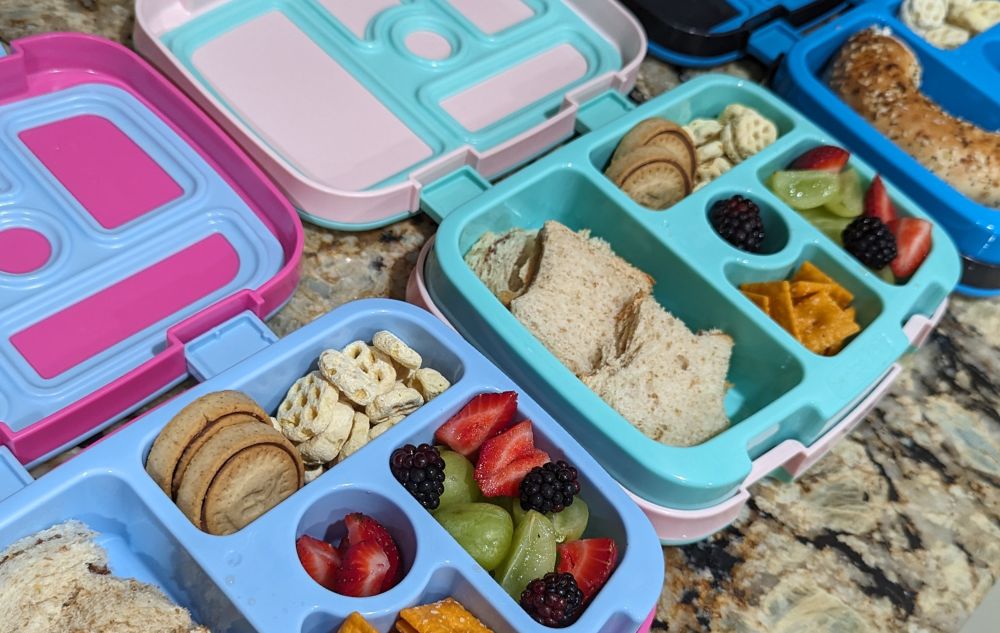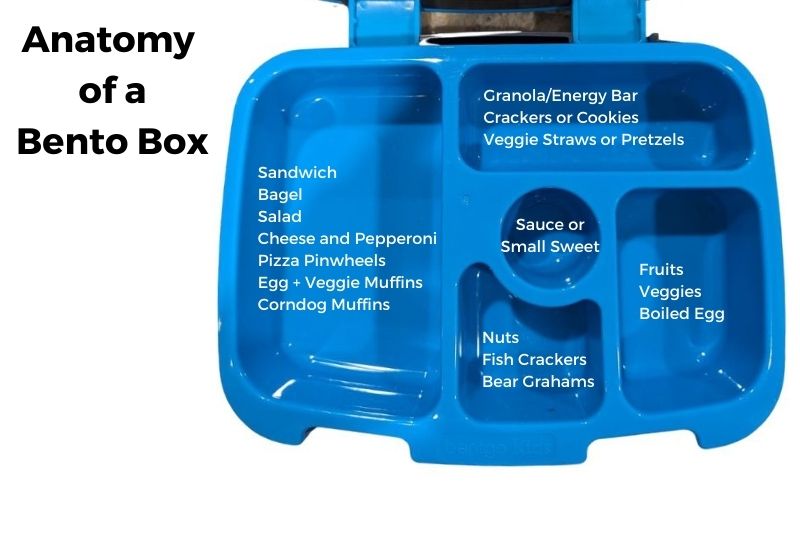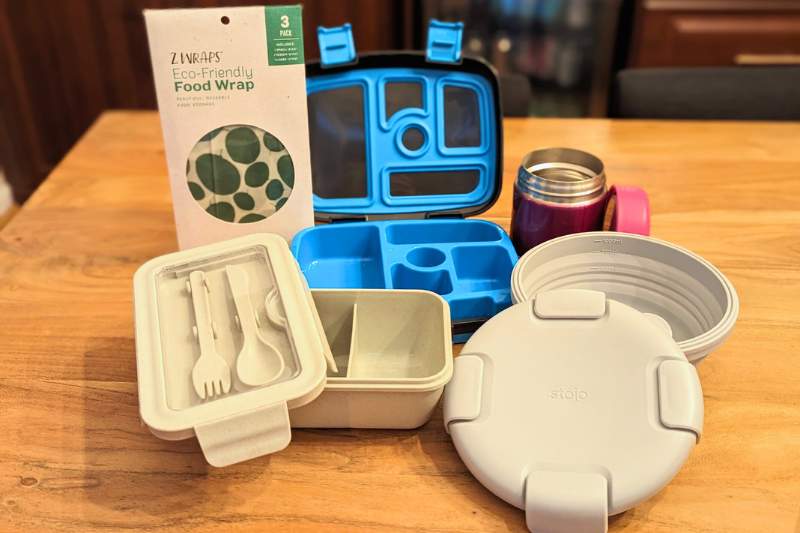Teaching children sustainable habits begins at home, and school lunches are a great way to explain how our choices make a difference for the planet.
As a mother of four kids under eight years old, I’m on the clock from the moment I open my eyes. Planning, preparing, and packing sustainable school lunches is a high priority.
As Head of Family Logistics, it’s my job to ensure my team has everything they need to be successful. So even before that first sip of black tea hits my lips, my brain is already troubleshooting any delays to ensure today’s deliverables stay on track. I pull out the bento boxes and open the fridge. “Mom, I can’t find any clean pants!” School lunches are momentarily delayed while I dig through the dryer.
Packing lunches in reusable containers requires a little more time, just as preparing meals at home takes more effort than eating out.
But I’ve found that my time sacrifice is worth it, both for our budget and the lesson my children are learning. As a family of six, we buy many grocery items in bulk – especially snacks. Our first trip to a wholesale retailer revealed that pre-packaged snacks don’t make financial or environmental sense: compared to the economy-sized big box, prepackaged snacks are several dollars more expensive, have a lower total weight (read: fewer snacks inside), and create far more waste.
It bugged me to pay more for convenience, especially when it had a higher toll on the environment.
We began using nesting reusable containers for lunches, which helped me avoid some single-use plastic sandwich bags and snack bags. But while the nesting plastic containers were fine for keeping one item away from another, the segmented top section wasn’t great at keeping strawberries and their juices away from cheesy fish crackers and other dried snacks, especially when jostled around in a backpack.
A friend suggested I try bento boxes.
Bento boxes have smaller compartments with leak-proof seals to prevent messier items from wandering into dry snacks. While initially discouraged by the price, I ponied up and bought a couple – and completely eliminated single-use plastic from our lunches! I still use the nesting containers for bulkier items like bagels and cold pizza, but the bento boxes are great for packing a wider variety of foods and snacks with absolutely zero flimsy plastic.
Eating more sustainably became even easier when I invested in the Food Focus Eco-Journey Starter Kit.
This kit contained some reusable items I had never heard of before, including a collapsible food container by Stojo and a set of Z Wraps – reusable beeswax-coated fabric that creates a seal with the heat of your hands and effectively eliminates plastic wrap from your kitchen. I reach for these products regularly and find that they round out my arsenal of reusable food products nicely. Like the bento boxes, the initial investment was worth it; my costs were quickly offset by all of the single-use plastic I no longer needed to buy.
It can be challenging to pack lunches for four kids with varying food preferences.
I generally pack cold lunches for my children, and I’ve found that bento boxes challenge me to fill each compartment with something unique day after day. It forces me outside the sandwich-and-two-sides routine and allows me to tailor healthy meals for even my pickiest eater (who doesn’t like sandwiches).
Finding easy-to-make, healthy recipes is a step in the right direction.
I’ve sought inspiration from friends, many Google searches, and One Planet Life recipes such as No-Bake Energy Bars, Banana Bread Granola, and Mediterranean Pinwheels.
My kids also enjoy being part of the lunch packing process and are engaged in understanding why reusable containers are better for the planet. At 6:45 am, my pajama-clad two-year-old is often found cross-legged on the counter, lovingly tucking something sweet into his sisters’ (and his own) lunchbox. The added bonus of teaching eco-conscious habits to my children is that they are also learning to be responsible and helpful.
I try my best to avoid plastic in the lunch routine, but I am inevitably more successful some days than others.
Since starting my sustainability journey with One Planet Life, I’ve noticed that I have a heightened awareness of my choices and have successfully loosened plastic’s grip on our lifestyle over time. A journey is usually not a straight path, but I feel each plastic avoidance I make matters.
And yes, at the end of the day, I have some extra lunch containers to clean, but it feels like a worthwhile sacrifice to keep unnecessary waste out of landfills and teach my kids the importance of preserving our planet.

Written by Kristina Shane
Editor and OPL Content Contributor
“I’ve always had a strong inclination to protect and nurture the people and living things around me; especially after having kids, I became passionate about conserving our planet for future generations. It’s my duty to teach my children, through words and actions, how to be good citizens and thoughtful stewards for our planet. Joining One Planet Life felt like a natural next-step for me, and I’m thrilled to support their mission and strengthen my own sustainability efforts.”













